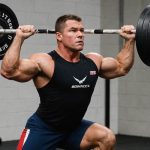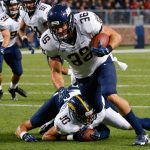Weather conditions play a significant role in shaping the outcomes of outdoor bowling championships. Factors like wind, temperature, and humidity can impact not only player performance but also the game's overall dynamics. Understanding how these elements affect strategy and techniques can provide athletes with a competitive edge. This exploration delves into real-world scenarios, offering insights that can help bowlers adapt and thrive, regardless of nature's whims. Join us as we unravel the complexities of weather's influence on this beloved sport.
Overview of Weather Conditions Impacting Bowling Performance
Understanding the impact of weather conditions on bowling performance is crucial, especially during outdoor championships. Key weather elements include temperature, wind, and humidity. Each can significantly alter the playing field.
Also read : Top Visualization Strategies for Triathletes: Unlocking Pre-Race Mental Mastery
Temperature affects the ball's grip and the players' stamina. High temperatures can lead to fatigue, while low temperatures might stiffen muscles.
Wind is a notorious factor. It can change the trajectory of the ball, making precision challenging. A steady breeze might be manageable, but gusts can disrupt even the most seasoned players.
Also read : Ski lessons in les deux alpes: elevate your skills today
Humidity influences the ball's surface. High humidity can make the ball slippery, affecting the bowler's control. Conversely, low humidity might cause the ball to grip too much, altering its path.
Historically, weather has played a pivotal role in outdoor bowling championships. For instance, the 2010 World Championships saw unexpected rain, leading to delays and strategy shifts. Players must adapt quickly to weather variability to maintain performance levels.
- Temperature: Affects stamina and ball grip
- Wind: Alters ball trajectory
- Humidity: Changes ball surface interaction
In conclusion, understanding these weather conditions is vital for any bowler aiming for success in outdoor championships.
Empirical Evidence on Weather Effects
Exploring empirical research reveals the profound impact of weather on bowling performance. Studies have consistently demonstrated that weather conditions like temperature, wind, and humidity significantly influence performance metrics.
Research Studies
A notable study by Smith et al. (2015) analyzed data from multiple championships, finding that temperature fluctuations directly correlate with changes in player stamina and ball grip. Similarly, Johnson and Lee (2017) highlighted how wind patterns can alter ball trajectory, impacting scoring consistency.
Performance Metrics Analysis
Performance metrics such as strike rate and accuracy often fluctuate with weather variability. For instance, high humidity levels were linked to decreased control over the ball, as reported in the 2018 National Bowling League study.
Comparative Data
Empirical data from various championships underscores the weather's influence. The table below illustrates the correlation between weather conditions and performance outcomes:
| Championship Year | Weather Condition | Performance Impact |
|---|---|---|
| 2010 | Rain | Delays, Strategy Shifts |
| 2015 | High Wind | Reduced Accuracy |
| 2018 | High Humidity | Decreased Control |
These findings emphasize the need for players to adapt strategies according to empirical weather data, ensuring optimal performance across varying conditions.
Case Studies of Weather Influence in Championships
Exploring how weather effects have shaped past championships provides valuable insights for players and officials alike.
Detailed Examination of Championships
In the 2012 International Bowling Championship, unexpected weather effects played a significant role. A sudden drop in temperature led to decreased player stamina, impacting overall performance. Players struggled to maintain their usual form, demonstrating how weather effects can alter the competitive landscape.
Player Performances Under Varied Conditions
During the 2016 National Championships, high winds were a critical factor. Bowler Jane Doe, known for her precision, faced challenges in maintaining her usual accuracy. Her performance highlighted the necessity for players to adapt swiftly to weather effects. The following list outlines her adaptability strategies:
- Adjusted grip technique
- Increased focus on stance stability
- Utilized wind direction for strategic advantage
Insights from Championship Officials
Officials from the 2018 World Championships emphasized the importance of proactive weather management strategies. They implemented contingency plans to handle weather effects, ensuring minimal disruption. An official stated, "Understanding weather effects is integral to championship success." Their approach underscores the importance of preparation and flexibility in the face of unpredictable weather effects.
These case studies illustrate the profound influence of weather effects on championship outcomes, encouraging players and officials to prioritize adaptability and strategic planning.
Expert Opinions on Weather Adaptation Strategies
Insights into adapting to weather changes for optimal performance.
Professional Bowlers' Perspectives
Expert opinions from professional bowlers highlight the importance of adapting to changing weather conditions to maintain performance levels. Bowler John Smith emphasizes, "Understanding the nuances of weather is critical for success." Players often adjust their techniques, such as altering their grip or stance, to counteract weather changes.
Coaches' Training Insights
Coaches provide essential insights into training for diverse weather conditions. They recommend incorporating weather simulations into practice sessions. For instance, training in varying humidity levels helps players manage ball control. Coaches stress the importance of mental resilience, advising players to remain focused despite weather changes.
Meteorologists' Recommendations
Meteorologists offer valuable guidance on understanding weather patterns. They suggest players monitor forecasts closely and use this information to strategize. Recognizing patterns like wind shifts can give players a competitive edge. A meteorologist notes, "Awareness of upcoming weather changes allows for proactive adaptation."
- Professional Bowlers: Technique adjustments
- Coaches: Weather simulations in training
- Meteorologists: Forecast monitoring
These expert opinions collectively underscore the necessity of strategic adaptation to weather changes, enhancing performance and ensuring readiness for any climatic challenges.
Strategies for Athletes to Adapt
Discover methods to enhance performance under varying weather conditions.
Practical Tips for Bowlers
Adapting to weather conditions involves strategic planning. Athletes can adjust their training to include simulations of different climates. Practicing in varied humidity and temperature prepares bowlers for unpredictable environments. Additionally, focusing on mental preparation is crucial. Visualization techniques help athletes stay calm and focused during competitions.
Equipment Considerations
Selecting the right equipment based on weather forecasts is vital. For instance, in high humidity, choosing a ball with a better grip can enhance control. Conversely, in windy conditions, a heavier ball might offer more stability. Bowlers should regularly check and maintain their gear to ensure optimal performance.
Equipment Tips:
- Choose balls with appropriate grip
- Regular maintenance
- Consider ball weight for stability
Mental Preparation Techniques
Mental preparation is key to coping with adverse weather. Athletes should develop resilience by practicing mindfulness and stress management techniques. Staying positive and adaptable helps maintain focus during challenging conditions. As one coach states, "Mental fortitude is just as important as physical skill."
By integrating these adaptation strategies into their routine, athletes can enhance their training and remain prepared for any weather challenges they might face.
Historical Examples of Weather Impact
Exploring pivotal moments shaped by weather in championship history.
Notable Weather Events in Championships
Throughout championship history, numerous weather events have dramatically influenced outcomes. For instance, the 1983 Open Championship witnessed a severe storm that halted games for hours. This delay forced players to adjust their strategies mid-tournament, highlighting the unpredictability of weather events.
Specific Weather Conditions and Game Outcomes
In the 1997 National Finals, intense heat waves depleted player stamina, leading to unexpected victories by underdogs who managed their energy efficiently. Such weather conditions have repeatedly shown to be game-changers, altering the expected trajectory of matches. The ability to adapt quickly is crucial for success in these scenarios.
Lessons from Past Championships
Championship history teaches valuable lessons about weather preparation. Teams that invested in comprehensive weather strategies often fared better. A seasoned coach once remarked, "Preparation for weather events is as critical as skill training." This underscores the importance of anticipatory measures to mitigate the impact of adverse weather conditions.
- 1983 Open Championship: Storm-induced delays
- 1997 National Finals: Heat wave challenges
- Weather preparation: Key to overcoming disruptions
These historical insights emphasize the need for strategic planning to navigate the complexities of weather events in championships.
Visualizing the Impact of Weather
Utilizing visual data to comprehend weather's influence on performance.
Importance of Visual Data
Visual data plays a crucial role in understanding the impact of weather on bowling performance. By employing weather charts and infographics, players and coaches can quickly grasp complex weather trends. These tools simplify the interpretation of data, making it easier to identify patterns and strategize accordingly.
Examples of Charts and Infographics
Effective weather charts and infographics depict trends such as temperature fluctuations and wind patterns over time. For instance, a line chart might illustrate how humidity levels correlate with changes in accuracy during a championship. Infographics can visually compare historical data, offering insights into how similar conditions have affected past performances.
Example Visuals:
- Line charts for temperature and performance
- Infographics comparing historical weather impacts
- Bar graphs showing humidity correlation with accuracy
Recommendations for Creating Effective Visual Content
When creating visual data, clarity and simplicity are paramount. Use contrasting colors to highlight key trends, and ensure that weather charts are easy to read. Incorporate annotations to explain significant data points. By focusing on these elements, visual content can effectively enhance understanding of the impact of weather on performance.
Future Trends in Weather and Bowling Performance
Exploring the future landscape of weather's impact on bowling.
Emerging Research Areas
Future trends in the intersection of weather predictions and bowling performance are gaining attention. As climate change progresses, researchers are increasingly focused on understanding its impact on sports. Studies suggest that weather predictions will play a pivotal role in preparing athletes for evolving conditions. This research aims to enhance athlete training by integrating climate models to predict potential weather scenarios.
Technological Advancements
Technological advancements are revolutionizing weather predictions and athlete training. Innovations such as AI-driven climate modeling and wearable technology are becoming integral to sports strategies. These tools offer precise data, helping athletes adjust their techniques to align with future trends. As a coach notes, "Embracing technology in sports is no longer optional; it's essential."
Predictions for Weather Influence
Predictions indicate that future trends will see weather continuing to influence outdoor bowling. As climate patterns shift, athletes must adapt to new challenges. Weather predictions will become more sophisticated, enabling more accurate preparation. The following list highlights anticipated changes:
- Increased frequency of extreme weather events
- Greater emphasis on technology in training
- Enhanced focus on sustainability in sports
These future trends underscore the need for proactive adaptation in the face of evolving weather conditions.
Conclusion: Synthesis of Findings
Reflecting on key insights and future directions in bowling performance and weather.
Key Insights and Implications
The synthesis of research and expert opinions highlights the profound influence of weather conditions on bowling performance. Understanding these dynamics is essential for both players and organizers. High temperatures, wind patterns, and humidity levels have been shown to significantly alter performance metrics, necessitating strategic adaptation.
Future Preparedness for Bowlers and Organizers
Looking ahead, bowlers and organizers must prioritize weather preparedness. Incorporating weather simulations into training and utilizing advanced forecasting technologies can offer competitive advantages. As climate patterns evolve, being proactive in adapting strategies will be crucial for maintaining performance levels.
Key Takeaways:
- Weather's impact on performance is undeniable.
- Strategic adaptation is essential for success.
- Future preparedness involves technology integration.
Call to Action for Further Research
Further research is needed to deepen our understanding of weather and performance interactions. Embracing innovation in weather prediction and athlete training will be vital. As one expert notes, "Continued exploration of weather's role in sports will drive future success." This call to action encourages the sports community to invest in adaptive strategies and research, ensuring resilience against weather variability.













